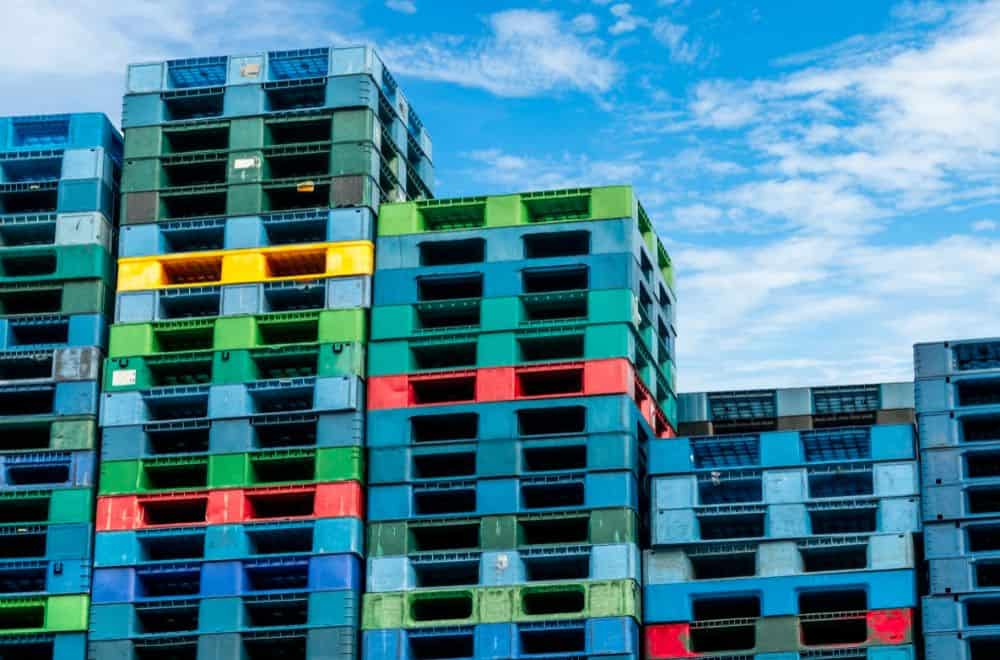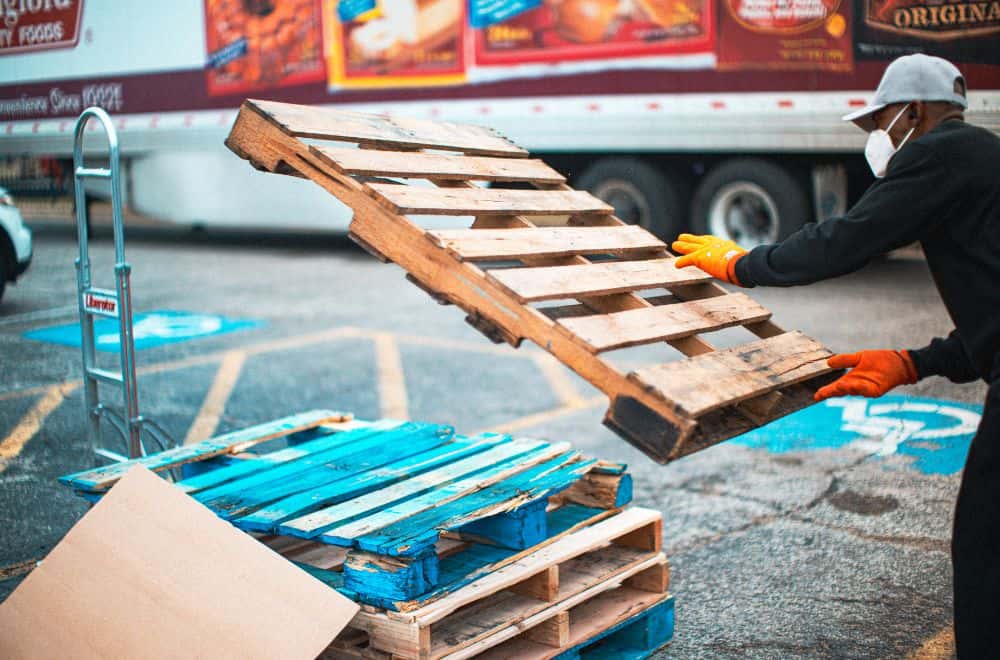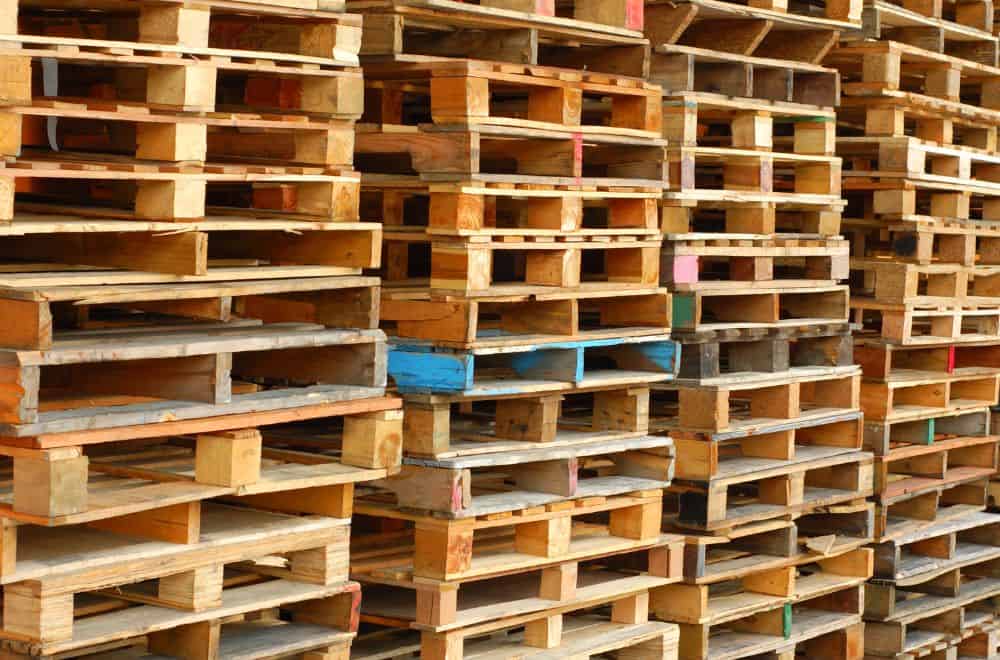
If you’re in the shipping or logistics industry, you’ve likely heard of CHEP pallets. But what makes them different from regular wooden pallets? While both serve the same basic purpose of transporting goods, there are a few key differences between the two that can impact your supply chain.
First and foremost, CHEP pallets are not your typical wooden pallets. They are standardized, reusable pallets that are designed to be used over and over again. This means that they are inspected, repaired, and maintained to a high standard, ensuring that they are safe and reliable for transporting your goods. In contrast, regular wooden pallets are often one-time use and can vary in quality depending on where they were sourced from.
Another key difference between CHEP pallets and regular wooden pallets is their size. CHEP pallets are typically standardized to match the pallet size of the country or economic market being served, such as 48×40 inches in the Americas. This means that they are designed to fit seamlessly into your supply chain, making it easier to transport and store your goods. In contrast, regular wooden pallets can vary in size and shape, which can make it more difficult to stack and transport them efficiently.
Understanding Pallets
Pallets are an essential part of the transportation and logistics industry. They are flat structures that allow goods to be stacked and transported easily. Pallets can be made of different materials such as wood, plastic, or metal. In this section, we will focus on the difference between CHEP pallets and regular wooden pallets.
Regular Wooden Pallets
Regular wooden pallets, also known as “white wood” pallets, are the most common type of pallets used in the industry. They are made of wood and are usually painted or treated to prevent rot and decay. Regular wooden pallets come in different sizes and designs, but the most common size is 48×40 inches in the Americas.
One of the main advantages of regular wooden pallets is that they are cheap and readily available. However, they have some disadvantages too. For example, they are not very durable and can break easily, leading to damage to the goods being transported. They can also be difficult to track and manage due to the lack of a standardized system.
CHEP Pallets
CHEP pallets are a type of rental pallet that is used by many companies in the transportation and logistics industry. They are made of durable materials such as plastic or composite wood and are designed to be reused multiple times. CHEP pallets are usually blue in color, which makes them easy to identify.
One of the main advantages of CHEP pallets is that they are more durable than regular wooden pallets. They are also standardized, which means that they can be easily tracked and managed throughout the supply chain. This makes them ideal for companies that need to transport goods over long distances or across borders.
However, CHEP pallets are more expensive than regular wooden pallets, which can be a disadvantage for some companies. They also require a deposit, which can be a barrier to entry for smaller companies.
In conclusion, both regular wooden pallets and CHEP pallets have their advantages and disadvantages. It is important to choose the right type of pallet for your specific needs based on factors such as cost, durability, and tracking capabilities.
What are CHEP Pallets

If you’re in the supply chain or logistics industry, you might have heard of CHEP pallets. CHEP is a global leader in pallet and container pooling services. They provide a sustainable, cost-effective, and efficient way to move products through the supply chain. Here’s what you need to know about CHEP pallets.
History of CHEP Pallets
CHEP was founded in Australia in 1945. In 1958, Brambles Limited, a company experienced in the materials handling industry, purchased CHEP. Over the years, CHEP has grown into a global company with operations in approximately 60 countries. CHEP pallets are easily recognizable by their blue color, which is used as a color coding aid and a marketing advantage.
Features of CHEP Pallets
CHEP pallets have several features that make them stand out from regular wooden pallets. Here are a few of them:
- Scalable: CHEP pallets can be scaled as per your business needs. You only pay for what you use, which means lower upfront costs.
- Sustainable: CHEP pallets help reduce your environmental impact and meet sustainability goals. They have a Zero Waste World commitment, which means they aim to eliminate waste from their operations.
- Standardized: CHEP pallets are standardized, which means they are consistent in size, shape, and quality. This makes them ideal for automated systems, reducing the risk of product damage and downtime.
- Hygienic: CHEP pallets are cleaned and sanitized after each use, which reduces the risk of contamination and improves food safety.
- Durable: CHEP pallets are made from high-quality materials and are designed to last longer than regular wooden pallets. This means fewer replacements and less downtime.
In conclusion, CHEP pallets are a sustainable, cost-effective, and efficient way to move products through the supply chain. They have several features that make them stand out from regular wooden pallets, such as scalability, sustainability, standardization, hygiene, and durability.
What are Regular Wooden Pallets
If you’re in the shipping and logistics industry, you’re likely familiar with wooden pallets. They’re a staple in the industry and have been used for decades to transport goods. In this section, we’ll take a closer look at what regular wooden pallets are, their history, and features.
History of Wooden Pallets
Wooden pallets have been around for over a century. They were first used in the early 20th century to transport goods in train cars. The first wooden pallets were made from hardwood and were designed to be lifted by forklifts. The use of wooden pallets became more widespread during World War II when they were used to transport goods to troops overseas.
Since then, wooden pallets have become a standard in the shipping and logistics industry. They’re used to transport everything from food to electronics and are an essential part of the supply chain.
Features of Wooden Pallets
Wooden pallets are typically made from hardwood or softwood and come in a variety of sizes. The most common size for wooden pallets is 48 x 40 inches, but they can be found in other sizes as well.
One of the benefits of wooden pallets is that they’re relatively inexpensive compared to other types of pallets. They’re also easy to repair and can be reused multiple times. Wooden pallets can be stacked, making them ideal for warehouses and other storage facilities.
However, wooden pallets do have some drawbacks. They can be heavy, making them difficult to move around. They’re also susceptible to moisture and can warp or rot over time. Additionally, wooden pallets can be a fire hazard if not stored properly.
Overall, wooden pallets are a reliable and cost-effective option for transporting goods. However, they do have some limitations that should be considered when choosing a pallet for your supply chain.
Comparing CHEP Pallets and Regular Wooden Pallets

When it comes to pallets, there are many options available in the market. Two of the most popular types are CHEP pallets and regular wooden pallets. In this section, we will compare these two types of pallets based on their material, durability, cost, and availability.
Material
CHEP pallets are made of high-quality, sustainable materials such as recycled wood and plastic. They are designed to be reusable and recyclable, which makes them an eco-friendly option for businesses. On the other hand, regular wooden pallets are made of natural wood, which is a renewable resource, but they are not as sustainable as CHEP pallets.
Durability
CHEP pallets are designed to be durable and long-lasting. They are made to withstand the rigors of transportation and storage, and they are less likely to break or splinter than regular wooden pallets. Regular wooden pallets, on the other hand, can be prone to damage, especially if they are not well-maintained.
Cost
When it comes to cost, CHEP pallets are typically more expensive than regular wooden pallets. However, this cost is offset by the fact that CHEP pallets are reusable and recyclable, which means that businesses can save money in the long run by using them. Regular wooden pallets, on the other hand, are cheaper upfront, but they are not as sustainable or long-lasting as CHEP pallets.
Availability
CHEP pallets are widely available in many countries, and they can be rented or purchased from CHEP directly. Regular wooden pallets, on the other hand, can be more difficult to source, especially if you need a specific size or type of pallet. Additionally, regular wooden pallets can be subject to regulations and restrictions, especially when it comes to international shipping.
In summary, both CHEP pallets and regular wooden pallets have their pros and cons. While CHEP pallets are more sustainable and durable, they are also more expensive. Regular wooden pallets are cheaper upfront, but they are not as eco-friendly or long-lasting as CHEP pallets. Ultimately, the choice between these two types of pallets will depend on your business needs and priorities.
Benefits of Using CHEP Pallets over Regular Wooden Pallets
When it comes to transporting goods, pallets are an essential component of the supply chain. While regular wooden pallets have been the traditional choice, CHEP pallets offer several benefits that make them a superior option.
Here are some of the benefits of using CHEP pallets over regular wooden pallets:
1. Consistency in Quality
One of the most significant advantages of CHEP pallets is their consistent quality. CHEP pallets are made from high-quality materials and are designed to meet strict standards, ensuring that they are sturdy and reliable. In contrast, regular wooden pallets can vary in quality, which can lead to issues with stability and safety.
2. Cost Savings
Using CHEP pallets can save you money in the long run. Since CHEP pallets are designed to be reused, you don’t need to constantly buy new pallets. This reduces your overall pallet costs and eliminates the need for pallet disposal. Additionally, CHEP pallets can be rented, so you only pay for what you use.
3. Sustainability
CHEP pallets are an environmentally friendly option. Since they are designed to be reused, they reduce the need for new pallets to be produced, which helps to reduce waste. Additionally, CHEP pallets are made from sustainable materials, so they have a lower environmental impact than regular wooden pallets.
4. Improved Supply Chain Efficiency
Using CHEP pallets can improve the efficiency of your supply chain. Since CHEP pallets are designed to be compatible with automated systems, they can be easily moved and tracked. This helps to reduce the time and effort required to move goods, which can improve overall supply chain performance.
In summary, using CHEP pallets over regular wooden pallets offers several benefits, including consistent quality, cost savings, sustainability, and improved supply chain efficiency.
Drawbacks of Using CHEP Pallets over Regular Wooden Pallets

While CHEP pallets have several advantages over regular wooden pallets, they also have some drawbacks that you should be aware of before deciding which type of pallet to use.
Higher Cost
One of the main drawbacks of using CHEP pallets is their higher cost compared to regular wooden pallets. Since CHEP pallets are designed for reuse, they are made with higher-quality materials and are subject to more stringent quality standards. This results in a higher cost per pallet, which can add up quickly if you have a large volume of shipments.
Limited Customization
Another drawback of using CHEP pallets is their limited customization options. CHEP pallets are available in a limited range of sizes and configurations, which may not be suitable for all types of shipments. If you require a pallet with specific dimensions or features, you may need to use a regular wooden pallet instead.
Complex Logistics
Using CHEP pallets can also add complexity to your logistics operations. Since CHEP pallets are part of a rental pool, you need to ensure that you have enough pallets on hand to meet your shipping needs. You also need to coordinate with CHEP to arrange for pickup and delivery of the pallets, which can be time-consuming and require additional resources.
Environmental Concerns
Finally, while CHEP pallets are designed for reuse and recycling, they still have a negative impact on the environment. CHEP pallets are made from wood, which is a non-renewable resource, and their production and transportation contribute to greenhouse gas emissions. If you are concerned about the environmental impact of your shipping operations, using regular wooden pallets may be a better option.
Frequently Asked Questions
What distinguishes CHEP pallets from regular wooden pallets?
CHEP pallets are made from high-quality wood and are designed to be more durable and long-lasting than regular wooden pallets. They are also standardized in size and shape, which makes them easier to handle and transport. Additionally, CHEP pallets are owned and managed by CHEP, which means that they are always in good condition and can be easily tracked and traced throughout the supply chain.
What are the benefits of using CHEP pallets over regular wooden pallets?
Using CHEP pallets can provide several benefits, including lower upfront costs, reduced environmental impact, and improved supply chain efficiency. CHEP pallets are also designed to be more durable and long-lasting than regular wooden pallets, which can help reduce the need for frequent replacements. Additionally, CHEP pallets are standardized in size and shape, which makes them easier to handle and transport.
How do CHEP pallet dimensions compare to those of regular wooden pallets?
CHEP pallets are available in a range of sizes and dimensions, depending on the country or economic market being served. In the Americas, the primary pallet size is 48×40 inches, while in the UK, the standard CHEP pallet size is 1200×1000 mm. In continental Europe, the standard size is 1200×800 mm. These dimensions are similar to those of regular wooden pallets, which are typically available in standard sizes based on the country or region.
Where can I find CHEP pallets for rent near me?
You can find CHEP pallets for rent at various locations throughout the United States and around the world. The best way to find rental locations near you is to visit the CHEP website and use the location finder tool. Simply enter your zip code or city and state, and the tool will provide a list of rental locations in your area.
What is the weight of a blue CHEP pallet?
The weight of a blue CHEP pallet can vary depending on the size and type of pallet. However, most CHEP pallets are designed to be lightweight and easy to handle, with an average weight of around 40 to 50 pounds.
Who is the owner of CHEP pallets?
CHEP pallets are owned and managed by CHEP, a global provider of supply chain solutions. CHEP is committed to sustainability and environmental responsibility, and works closely with customers to help them meet their sustainability goals and reduce their environmental impact.